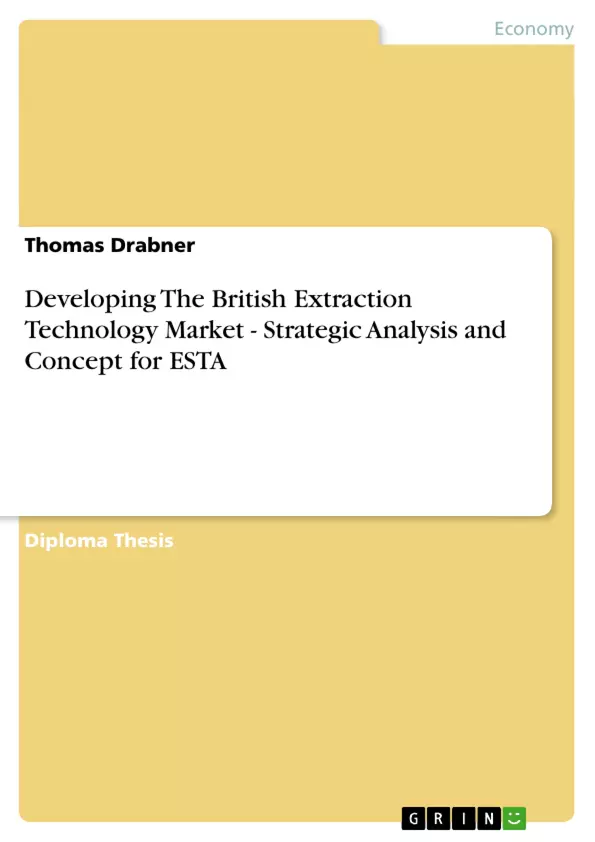The globalization of today’s market place has been subject to great attention. Whether or not a company participates directly in international business, hardly anyone can claim not to be involved in any way in the global market place. In fact, due to saturation tendencies in the domestic market, the dependency on international customers as well as the ever increasing pace of global competition, nearly all companies of any size and business level are faced with the impacts of the world market. Their performance, however, differs significantly. Especially for SMEs foreign expansion is the main challenge; minor foreign market knowledge, inexperienced staff and the dependency on day-to-day operations limit the possibilities for a systematic approach to foreign markets.
In the literature of international marketing and management there is a variety of theoretical approaches concerning the process of internationalisation respectively the entry into foreign markets as well as market development. However, in many cases especially Small and Medium Sized Enterprises (SMEs) fail to interpret the theoretical approaches according to their needs and thus are confronted with a considerable gap between theory and their business reality.
Being employed in a SME myself missing strategic planning and emotional decision-making has indeed been a part of my work experience during my cooperative studies. In my company I am now responsible as Area Sales Manager for the Scandinavian region, Austria and the United Kingdom and it will be my task to correlate the indications of theory with the necessities of the specific internal reality of my job assignment. As the company has started to re-organise export activities, the development of the British extraction technology market is a given task and at the same time the subject of my dissertation.
Inhaltsverzeichnis (Table of Contents)
- Introduction
- Problem Definition
- Objective
- Methodical Approach
- Definitions & Explanations
- Theoretical Framework
- Basics
- Fundamental Elements
- Integrated Strategic Planning – An Illustration
- The Market Development Process
- Targets
- The British Market - Macro Surroundings
- Market Characteristics
- Politics
- Regulations & Standards
- Industry
- The Extraction Technology Branch – Micro Surroundings
- Market Size & Demand
- Authorities Affecting Demand
- Competitive Surroundings
- Existing Distribution Standards
- ESTA - A Characterisation
- Company Profile
- Products
- Current Activities within the UK Market
- SWOT Profile - An Interim Conclusion
- Strategy Selection - Theory and Classification
- Corporate Level
- Business Unit Level
- Generic Business Strategies
- ESTA's Business Strategy - Domestic and Abroad
- Functional Level
- Basic Marketing Strategy
- The Marketing Strategy Path For ESTA
- Marketing Planning – Basic Considerations for Implementation
- Identifying Market Segments and Target Customers
- Formulating a Product Strategy
- Setting A Price Range
- Establishing Distribution
- Finding & Selecting Potential Sales Partners
- Establishing a Relationship
- Promoting the Development
- Short-Term Schedule & Budget Estimation
- Conclusion
- Market Analysis: Evaluating the macro and micro-environmental factors impacting the British extraction technology market.
- Competitive Landscape: Assessing the existing competitive structure and identifying potential opportunities for ESTA.
- Strategic Planning: Developing a comprehensive strategic plan encompassing corporate, business unit, and functional levels.
- Marketing Implementation: Outlining the key considerations for implementing the proposed marketing strategy.
- Market Entry Strategy: Defining a strategy for ESTA's entry into the British extraction technology market.
Zielsetzung und Themenschwerpunkte (Objectives and Key Themes)
This dissertation examines the strategic development of the British extraction technology market for ESTA GmbH & Co. KG. It aims to provide a comprehensive analysis of the market environment and develop a strategic plan for market entry and growth. The dissertation incorporates both theoretical and practical aspects, drawing upon existing frameworks and case studies to inform the strategic approach.
Zusammenfassung der Kapitel (Chapter Summaries)
The dissertation begins by defining the problem and setting out the objective and methodical approach. Chapter 2 provides a theoretical framework, encompassing basics, fundamental elements, and an illustration of integrated strategic planning. Chapter 3 delves into the market development process, starting with target identification and then exploring the British market's macro surroundings, including market characteristics, politics, regulations, and industry. Chapter 3 then focuses on the extraction technology branch's micro-surroundings, including market size and demand, authorities impacting demand, competitive surroundings, and existing distribution standards.
Chapter 3 concludes with a detailed analysis of ESTA, encompassing its company profile, products, and current activities within the UK market. A SWOT profile is developed and used as a basis for selecting an appropriate strategy. This chapter also presents a theoretical framework for strategy selection, classifying strategies at the corporate, business unit, and functional levels.
Chapter 3 concludes with a thorough examination of marketing planning considerations, including identifying market segments and target customers, formulating a product strategy, setting a price range, establishing distribution channels, promoting the development, and creating a short-term schedule and budget estimation.
Schlüsselwörter (Keywords)
The dissertation focuses on developing a strategic approach for ESTA GmbH & Co. KG to enter and grow within the British extraction technology market. This involves analyzing the market environment, identifying opportunities, and creating a comprehensive strategic plan encompassing corporate, business unit, and functional levels. The dissertation draws on concepts from strategic management, market analysis, and marketing, and utilizes frameworks such as SWOT analysis to inform the development of a tailored strategy for ESTA.
- Quote paper
- Thomas Drabner (Author), 2003, Developing The British Extraction Technology Market - Strategic Analysis and Concept for ESTA, Munich, GRIN Verlag, https://www.grin.com/document/53652



